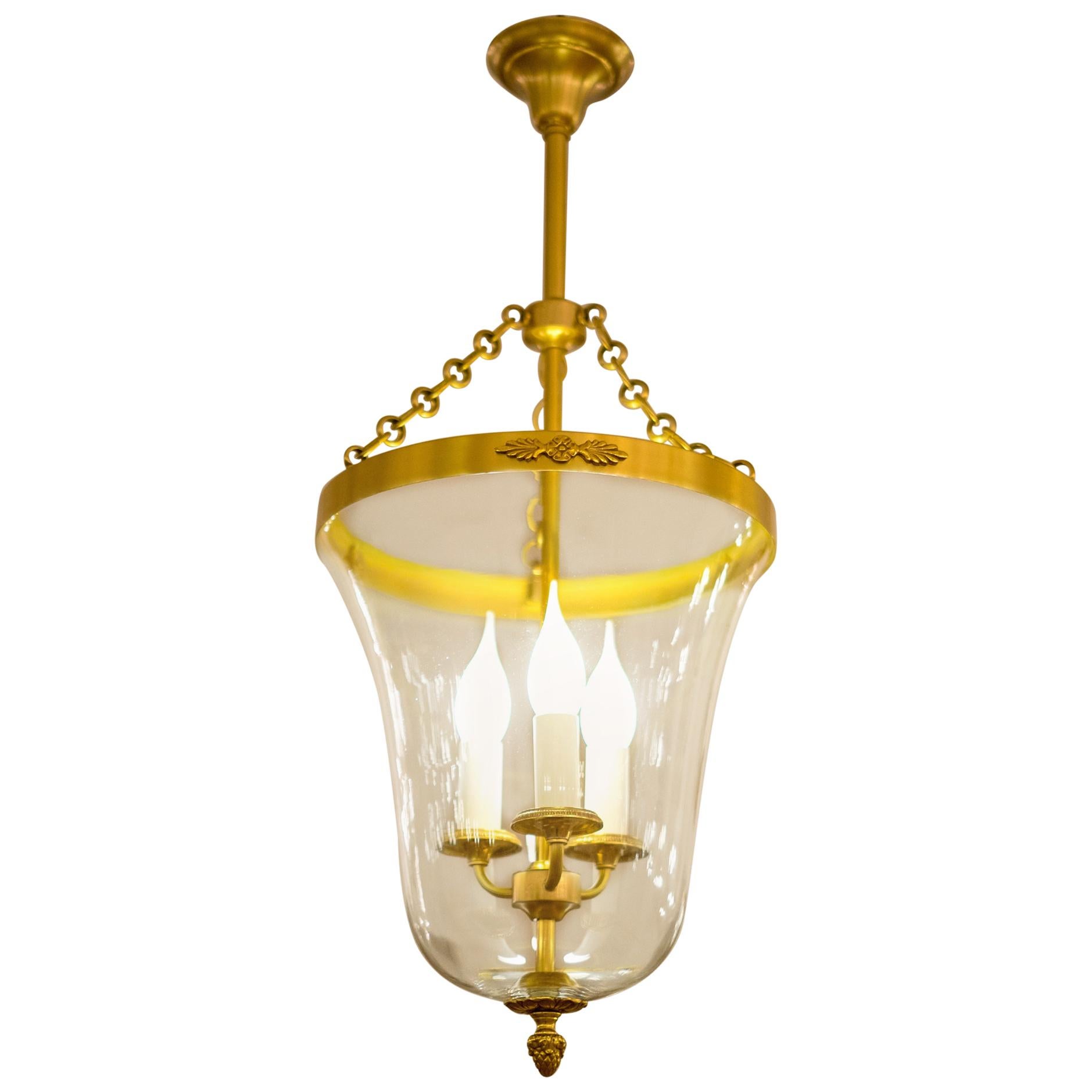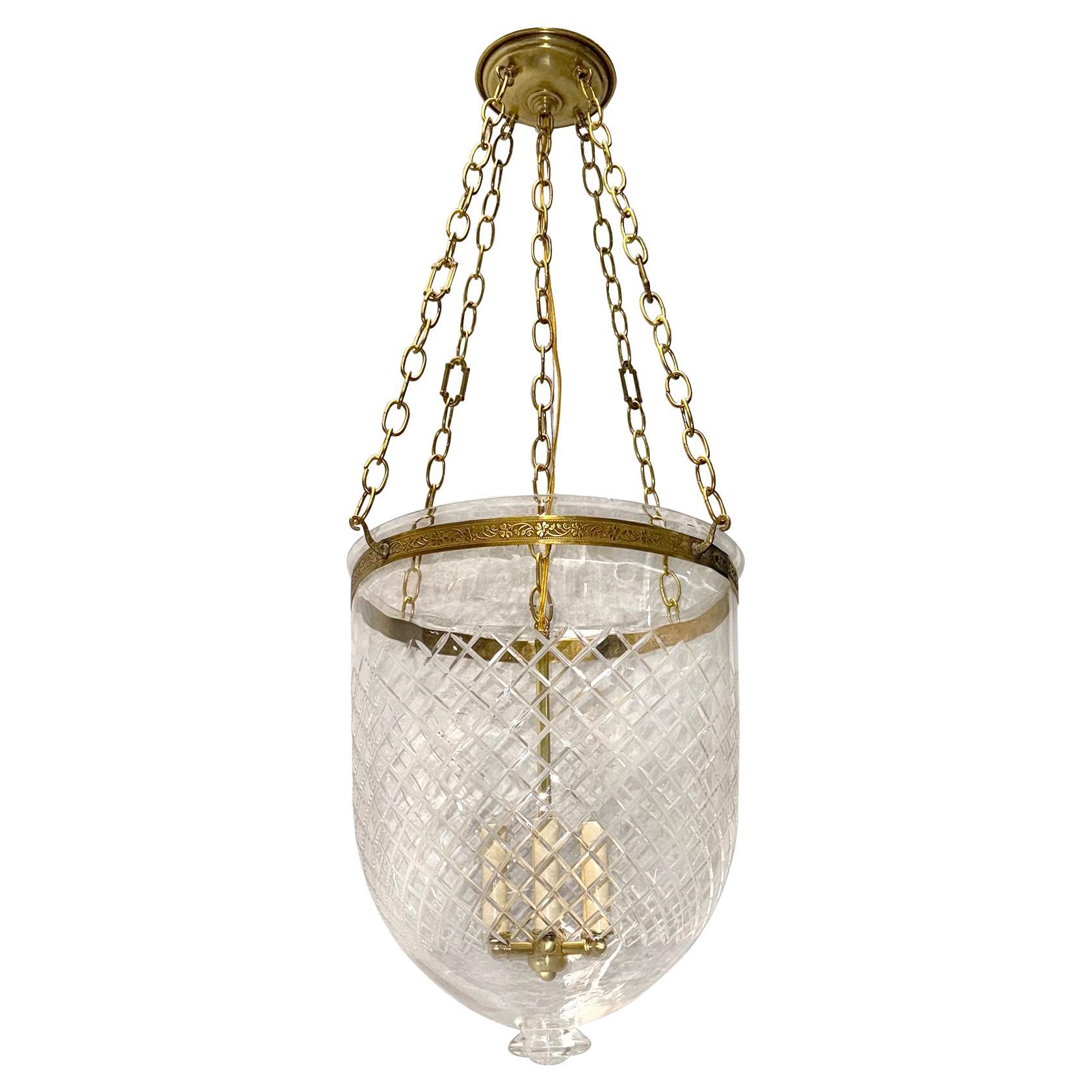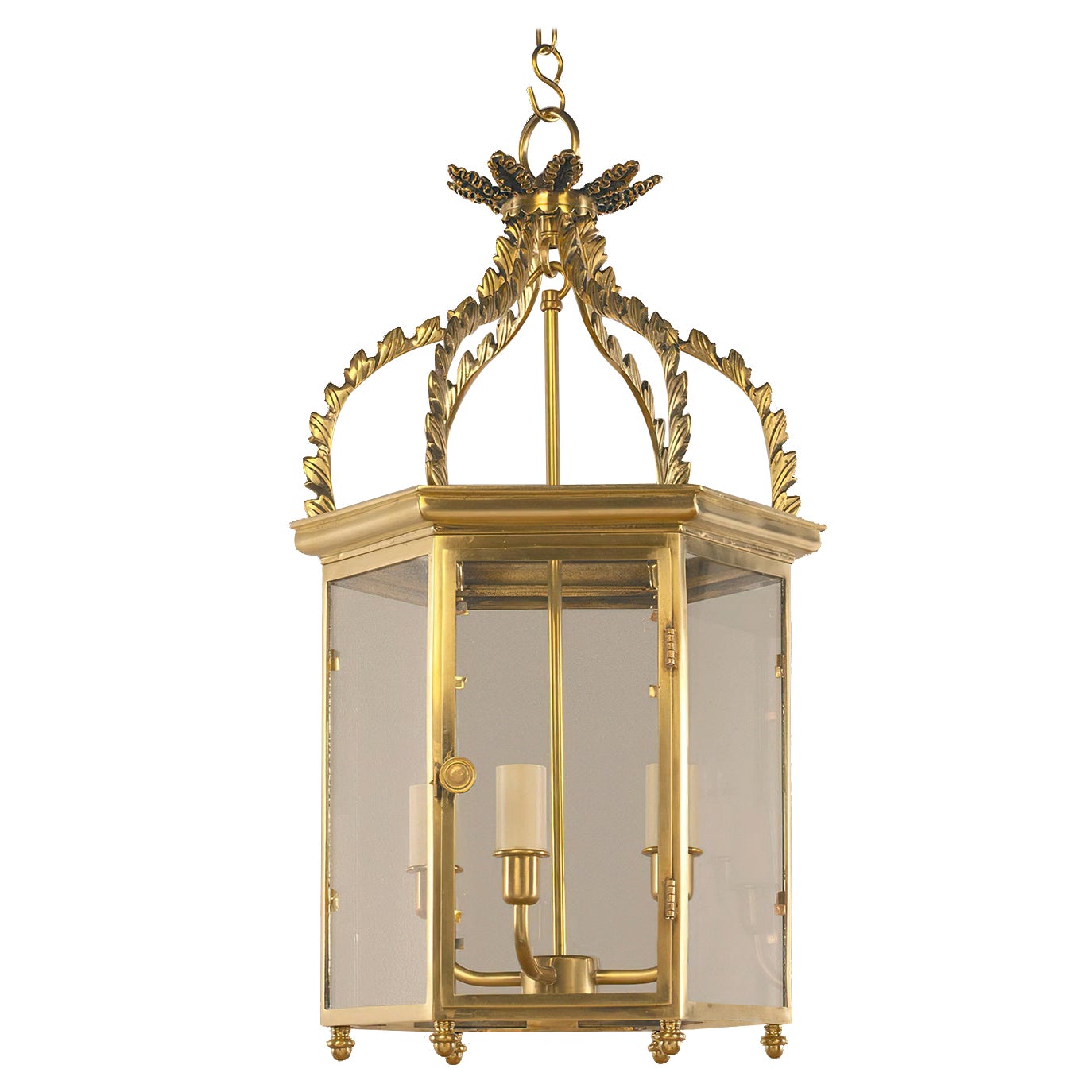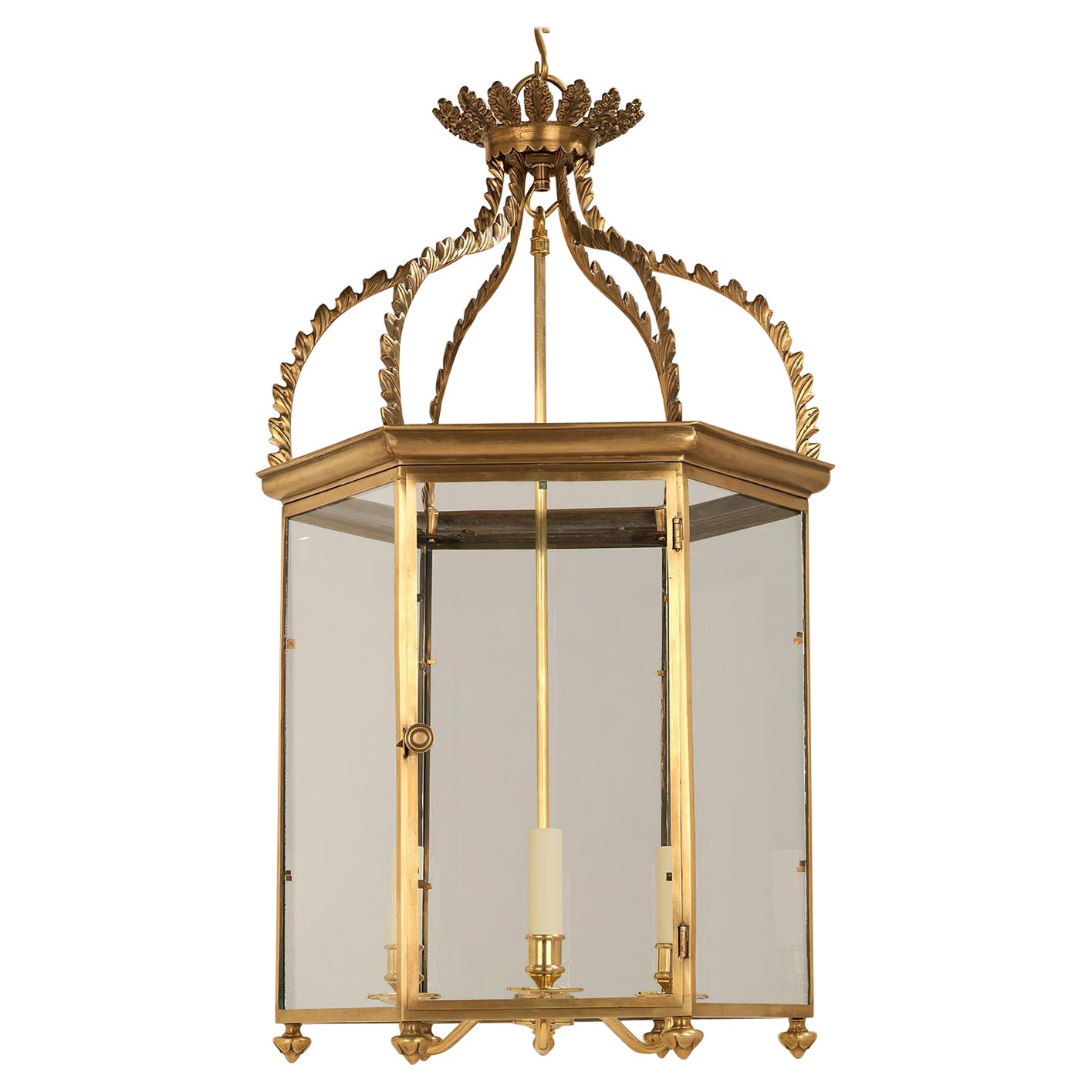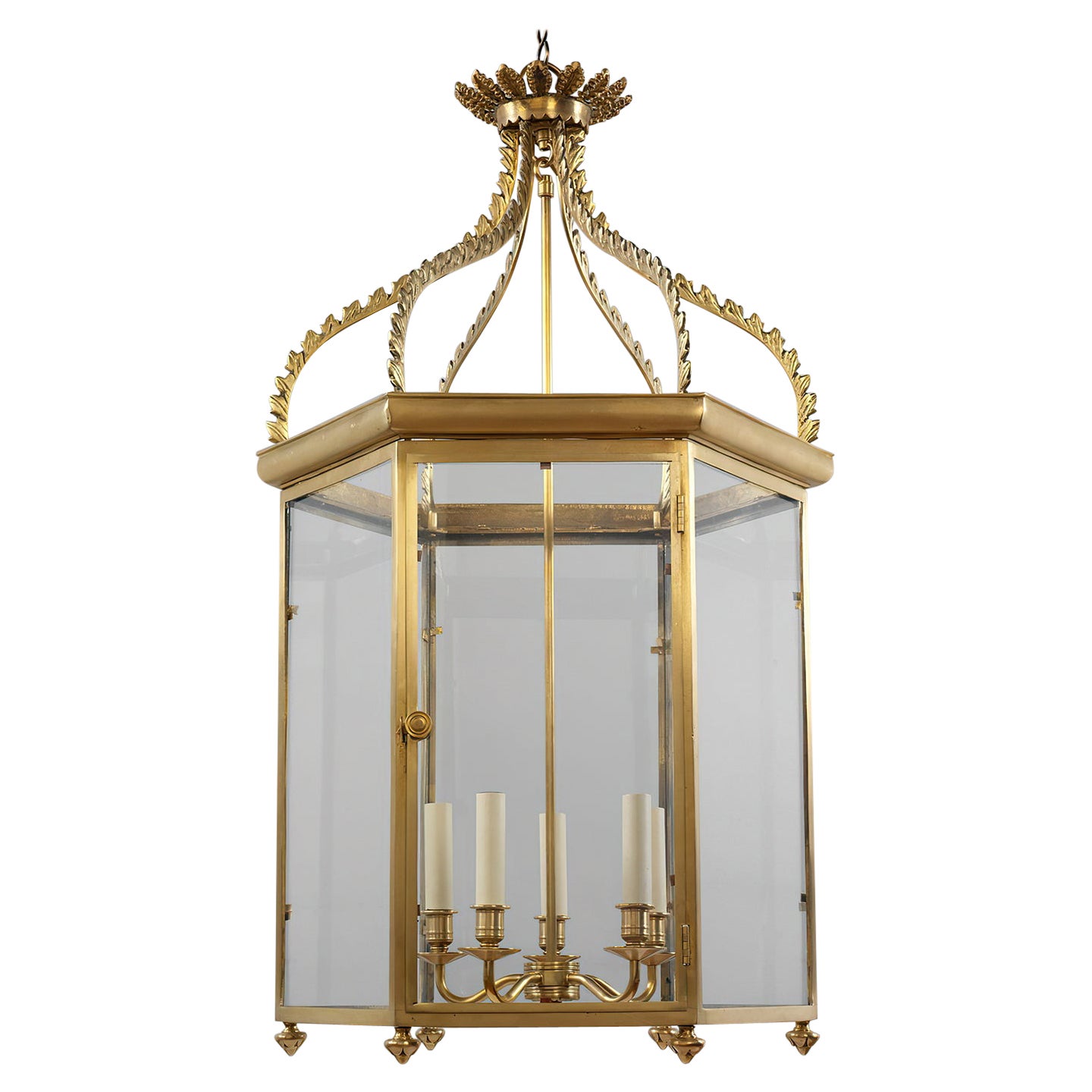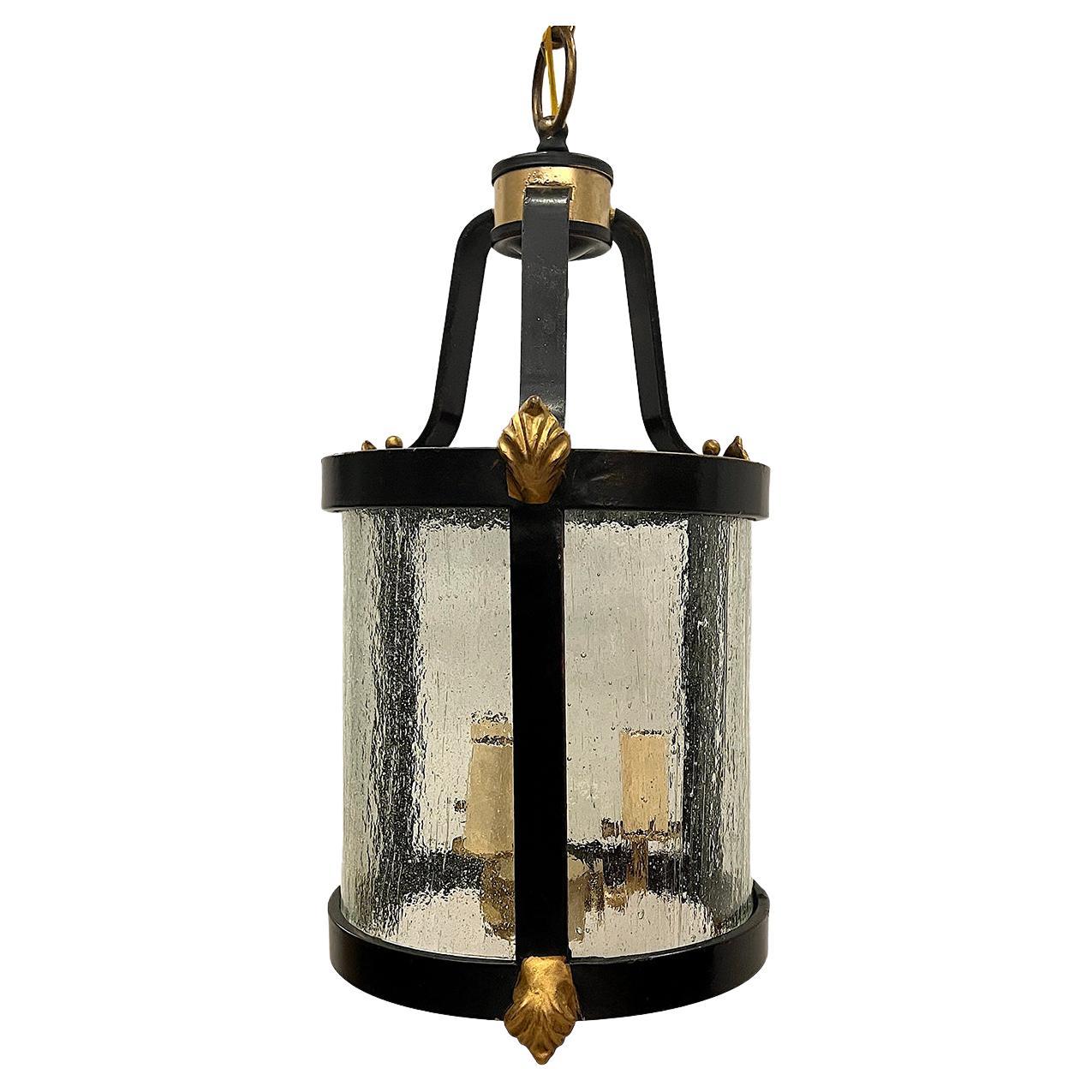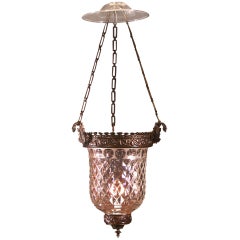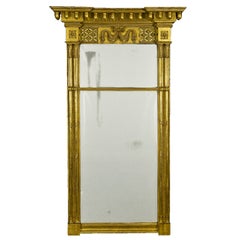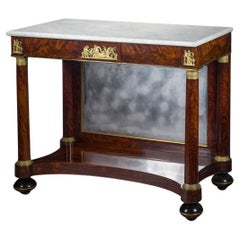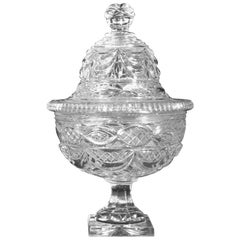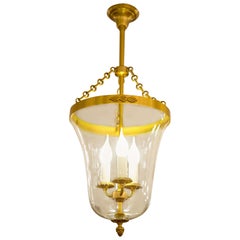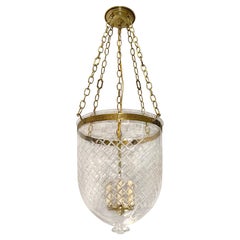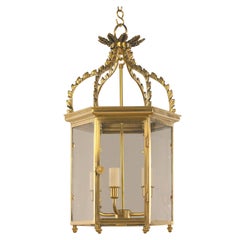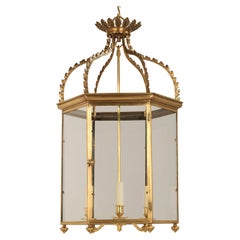Want more images or videos?
Request additional images or videos from the seller
1 of 6
Regency Lantern
$8,500
£6,549.01
€7,481.01
CA$12,169.24
A$13,273
CHF 6,978.82
MX$159,281.85
NOK 88,115.21
SEK 82,187.46
DKK 55,872.21
About the Item
English
Regency lantern, circa 1800.
Glass, blown, with gilt-brass fittings
27 in. high, 13 1/4 in. greatest diameter.
In a market that is overwhelmed with reproduction lanterns of this type, period examples are extremely rare.
Condition: Excellent. The gilt-lacquer finish has been redone. Non-invasively electrified.
- Dimensions:Height: 27 in (68.58 cm)Diameter: 13.25 in (33.66 cm)
- Style:Regency (Of the Period)
- Materials and Techniques:
- Place of Origin:
- Period:
- Date of Manufacture:circa 1800
- Condition:Refinished. Condition: Excellent. The gilt-lacquer finish has been redone. Non-invasively electrified.
- Seller Location:New York, NY
- Reference Number:Seller: FAPG 19259D1stDibs: U101115903219
About the Seller
No Reviews Yet
Recognized Seller
These prestigious sellers are industry leaders and represent the highest echelon for item quality and design.
Established in 1952
1stDibs seller since 2010
Associations
Art Dealers Association of America
- ShippingRetrieving quote...Shipping from: New York, NY
- Return Policy
More From This Seller
View AllHanging Lantern
By Boston and Sandwich Glass Company
Located in New York, NY
American (glass attributed to Boston and Sandwich Glass Company, Sandwich, Massachusetts), circa 1830-1840.
Glass, blown, partially frosted, and wheel cut, with cast and die-rolled brass, patinated.
This hanging lamp is typical of the production of such lanterns by the Boston & Sandwich Glass Company of Sandwich, Massachusetts, during the 1830s, and perhaps as late as the early 1840s. The present example is an unusually elaborate specimen with its overall frosting and cutting. In their The Glass Industry in Sandwich, II (1989), Raymond E. Barlow and Joan E. Kaiser quote Boston & Sandwich Glass Company manager Deming Jarves on the fabrication of lamps of this general type (p. 225 no. 2398). These hanging lanterns could be supplied with a candle or with a peg lamp...
Category
Antique 19th Century American Empire Lanterns
Materials
Brass
$15,000
Pier Mirror in the Neoclassical Taste
Located in New York, NY
New York, circa 1815-1820.
Wood, gessoed and gilded, with mirror plate.
75 1/2 in. high, 44 1/8 in. wide (at the cornice), 8 1/2 in. deep (at the cornice).
Condition: Some restorati...
Category
Antique 19th Century American Neoclassical Pier Mirrors and Console Mirrors
Materials
Mirror, Wood
Pier Table
Located in New York, NY
One of the signature forms of the Neo-Classical period, the pier (or console) table received its name from its typical use against the wall, or pier, between two windows. Pier tables...
Category
Antique 1810s American Neoclassical Tables
Materials
Marble, Brass, Bronze, Lead
$65,000
Monumental Clear Cut-Glass Covered Compote
Located in New York, NY
Monumental clear cut-glass covered compote, circa 1820.
La Cristallerie de Vonêche (active 1802-30), Belgium.
Glass, blown and cut.
Measures: 17 3/8 i...
Category
Antique Early 19th Century Belgian Neoclassical Tableware
Materials
Blown Glass, Cut Glass
Pair of Fern Wall Brackets
Located in New York, NY
American, circa 1850-1880.
Eastern white pine (Pinus strobus), with wire armature and composition ornament, gessoed
and gilded.
Measures: 14 1/8 in. high, 16 5/16 in. wide (at the sh...
Category
Antique 19th Century American Aesthetic Movement Wall Brackets
Materials
Wood
$55,000 / set
Peacock Green Cut-Glass Decanter
Located in New York, NY
Peacock green cut-glass decanter
English, circa 1840.
Glass, blown and cut.
Measures: 13 1/2 in. high.
Condition: Perfect, except for minor flakes on the bottom of stopper.
Category
Antique 1840s English Neoclassical Glass
Materials
Glass
You May Also Like
Lantern, 01713
Located in PARIS, FR
With three lights, this lantern is a mix between the sleek design of a modern lantern and a Classic design with its decorative pine cone decorative touch.
Category
Antique 18th Century Lanterns
Materials
Brass
$1,241 / item
Large English Lantern
Located in New York, NY
A large etched glass lantern with criss cross pattern. Being wired with a cluster of 4 candelabra lights.
Measurements:
Glass size: 15" diameter, 18" height
Total size with chain s...
Category
Vintage 1960s English Lanterns
Materials
Brass
$10,500
Regency Hall Lantern
Located in Westwood, NJ
Regency hall lantern. This classic lantern is based on a 19th-century six-sided original. Superbly cast, it demonstrates a range of techniques, fr...
Category
21st Century and Contemporary English Regency Lanterns
Materials
Brass
$6,760 / item
Regency Hall Lantern, Medium
Located in Westwood, NJ
Regency hall lantern. This classic lantern is based on a 19th-century six-sided original. Superbly cast, it demonstrates a range of techniques, fr...
Category
21st Century and Contemporary English Regency Lanterns
Materials
Brass
$8,590 / item
Regency Hall Lantern, Large
Located in Westwood, NJ
Regency hall lantern. This classic lantern is based on a 19th-century six-sided original. Superbly cast, it demonstrates a range of techniques, fr...
Category
21st Century and Contemporary English Regency Lanterns
Materials
Brass
$11,500 / item
French Neoclassic Lantern
Located in New York, NY
A circa 1920's French black and gilt neoclassic lantern with 3 lights.
Measurements:
Minimum drop: 21"
Current drop: 25"
Diameter: 9".
Category
Vintage 1920s French Lanterns
Materials
Bronze
More Ways To Browse
Antique Reproduction Lanterns
Antique Regency Lantern
Antique Signal Lamp
Cast Iron Pagoda Lantern
Chinese Bronze Lantern
English Verdigris Lantern
Lantern 60s
Noguchi Paper Lantern
Pair Copper Verdigris Lanterns
Pair Gas Lanterns
Parisian Lantern
Petite Bell Jar
Ship Woolies
Smoke Bell Lantern
Tiffany Lantern
Toleware Lantern
Vintage Perko Marine Lamp
Anglo Indian Lantern
